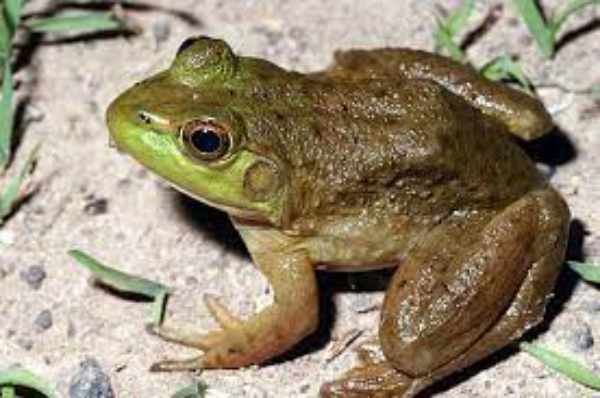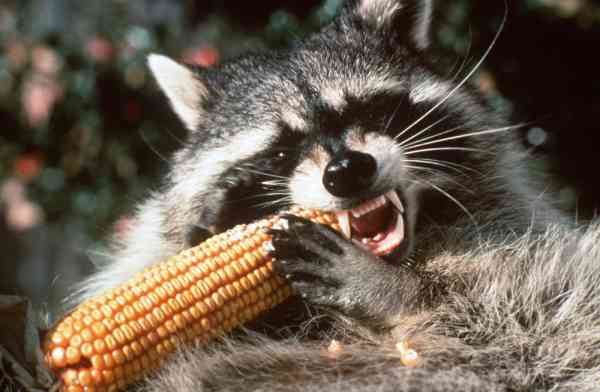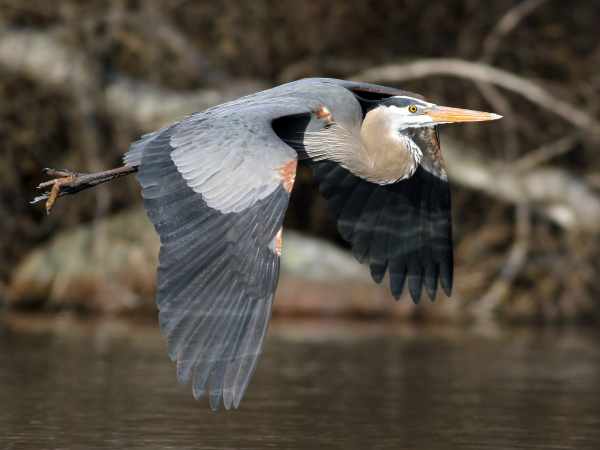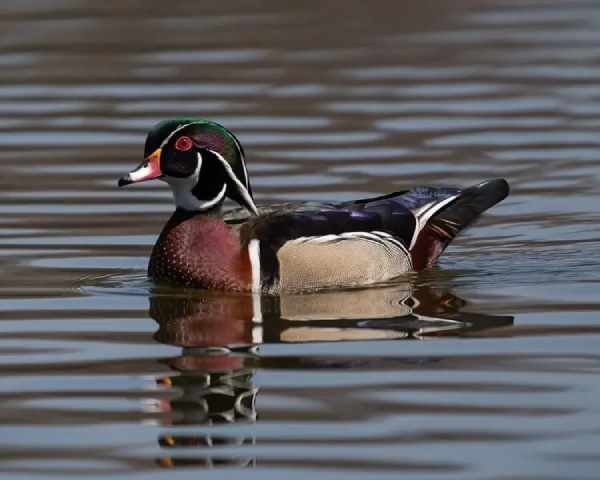Wetlands, often seen as nature’s hidden treasures, are ecosystems that are teeming with life, beauty, and a delicate balance of biodiversity. These water-rich habitats, including swamps, bogs, marshes, and flooded forests, are a sanctuary for a remarkable array of wildlife. From the subtle melodies of singing frogs to the elegant glide of waterfowl, wetlands resonate with the sights and sounds of nature at its finest.
In this article, we venture into the heart of wetlands, unveiling the mysteries and wonders of the Animals in wetlands that inhabit these lush domains. From the charismatic alligator to the elusive wetland bird species, we’ll explore the diversity, adaptations, and essential roles these animals play in one of the world’s most captivating ecosystems. Join us in this exciting expedition as we unlock the secrets of the marsh and the captivating animals that call it home.
Table of Contents
Characteristics of Wetlands:
Wetlands are distinct ecosystems characterized by their unique hydrological conditions, where the water table is at or near the surface for a significant portion of the year. These habitats transition between land and water, showcasing a rich diversity of plant life adapted to thrive in saturated soils. Emergent vegetation like cattails, sedges, and reeds often dominate the landscape, providing shelter and nesting sites for various animal species. The fluctuating water levels and nutrient-rich soils contribute to a thriving biological community, including amphibians, waterfowl, fish, insects, and mammals, creating a delicate balance within this fascinating ecosystem.
Overview Of Animals In Wetlands
Ducks:

Ducks are a common sight in wetlands across the world. These waterfowl are known for their distinctive quacks and vibrant plumage. They are well adapted to the watery environment, with webbed feet that make them excellent swimmers. Ducks primarily feed on aquatic plants, small fish, and insects. During the breeding season, they build nests in the reeds and grasses of wetland habitats. Wetlands provide essential breeding and foraging grounds for various duck species, making them an integral part of these ecosystems.
Frogs:

Frogs are amphibians that thrive in the moist environments of wetlands. They are known for their distinctive croaking calls, which serve as a chorus during the breeding season. Frogs lay their eggs in water, where they hatch into tadpoles before transforming into adult frogs. Their semi-permeable skin allows them to breathe through it, making them sensitive to environmental changes. Frogs play a crucial role in wetland food chains, both as predators of insects and as prey for larger animals. Their presence indicates the health of wetland ecosystems.
Turtles:

Turtles are reptiles commonly found in wetlands and aquatic habitats. Their protective shells provide them with a unique defense mechanism against predators. Turtles are cold-blooded and often bask in the sun to regulate their body temperature. They are omnivores, consuming aquatic plants, algae, insects, and small aquatic animals. Many turtle species are aquatic, spending most of their lives in water, while others are semi-aquatic, frequently venturing onto land. Turtles are known for their longevity, with some species living for several decades or even over a century. They are a fascinating and enduring presence in wetland ecosystems.
Muskrat:

Muskrats are semi-aquatic rodents that are highly adapted to wetland environments. They are skilled swimmers and construct burrows and lodges in the marshy areas of wetlands. Muskrats primarily feed on aquatic plants like cattails and sedges, which they often gather and store for the winter. These industrious creatures are known for their musky scent, which they use to mark their territory. Muskrats play a vital role in wetland ecosystems by influencing plant growth and creating open water channels through their activities. Their presence is indicative of the health and vitality of wetlands.
Catfish:

Catfish are well-suited to the watery depths of wetlands and rivers. These fish are characterized by their distinctive whisker-like barbels and scaleless bodies. Catfish are bottom-dwelling predators that feed on a variety of prey, including insects, small fish, and plant matter. They have a remarkable ability to survive in low-oxygen environments by gulping air at the water’s surface. Catfish are an important part of the aquatic food chain in wetlands, and they are also a popular catch for anglers. Their adaptability and unique features make them a fascinating component of wetland ecosystems.
Beavers:

Beavers, often dubbed nature’s engineers, are iconic inhabitants of wetlands. These semi-aquatic rodents are renowned for their exceptional ability to build dams and lodges using sticks, mud, and stones. Dams help create wetland habitats, providing shelter and protection for various wildlife. Beavers primarily feed on bark, leaves, and aquatic plants. Their industrious nature and profound impact on wetland landscapes make them keystone species, influencing the ecosystem’s hydrology and biodiversity.
Dragonflies:

Dragonflies, with their dazzling colors and intricate wings, grace the skies above wetlands. They are adept aerial hunters, preying on mosquitoes and other insects. Dragonflies undergo a remarkable metamorphosis, starting as aquatic nymphs before emerging as airborne adults. Wetlands provide crucial breeding sites for dragonflies, and their presence is a sign of a healthy, balanced ecosystem. These agile fliers play a vital role in controlling insect populations, contributing to the delicate balance within wetland habitats.
Cattails:

Cattails, also known as bulrushes, are prominent wetland plants with tall, slender stems and distinctive brown cylindrical flower spikes. They thrive in marshes, ponds, and along lake edges. Cattails are a keystone species, providing food and shelter for numerous animals. They also help stabilize soil and improve water quality by filtering pollutants. Cattails are highly adaptive, their various parts used by both wildlife and humans, showcasing their ecological and practical significance in wetland environments.
Cormorants:

Cormorants, water birds with long necks and sharp beaks, are frequent visitors to wetlands. They are exceptional divers and proficient fishers, diving underwater to catch their prey. Cormorants play a vital role in regulating fish populations and contribute to the balance of wetland ecosystems. Despite their significant role, they are often considered a double-edged sword due to their impact on local fish populations, demonstrating the complex dynamics of predator-prey relationships within these habitats.
Bullfrogs:

Bullfrogs, as the largest North American frog species, are synonymous with wetlands. Recognizable by their deep calls and large size, they are voracious predators that consume insects, small fish, and even other amphibians. Bullfrogs are both adaptable and invasive, posing challenges to native amphibians in some regions. Understanding their behaviors and interactions with the ecosystem is essential for maintaining the delicate balance of wetland biodiversity.
Red-winged Blackbird:

The red-winged blackbird is a striking bird often found in wetlands, recognizable by the vibrant red and yellow patches on the male’s wings. They are highly territorial during breeding season, their distinctive calls resonating across marshes and reed beds. Red-winged blackbirds primarily feed on seeds, insects, and small aquatic creatures. They play a crucial role in controlling insect populations, making them valuable members of wetland communities.
Water Lilies:

Water lilies are exquisite aquatic plants with floating leaves and beautiful flowers. They grace the surfaces of wetlands, providing shelter for fish and other aquatic creatures. Water lilies play a pivotal role in the ecology of these habitats, as their broad leaves create shade, helping to regulate water temperatures and reduce algae growth. Their vibrant blooms add to the aesthetic appeal of wetlands, attracting various pollinators.
Marsh Wren:

The marsh wren is a small, secretive bird that inhabits wetlands, weaving its intricate nests among the reeds and grasses. Their bubbly and melodic songs are synonymous with marshes, often serving as territorial calls. Marsh wrens feed on insects and spiders, contributing to pest control within the wetland ecosystem. Their survival is closely tied to the health of wetlands, making them a vital indicator species.
Salamanders:

Salamanders are fascinating amphibians that thrive in wetland environments. These slender, moist-skinned creatures are known for their distinctive tails and typically lead secretive lives under logs, rocks, or in the water. Salamanders play a crucial role in wetland food chains, serving as both predators and prey. Their presence is indicative of a healthy wetland ecosystem, highlighting the importance of conserving these habitats.
Kingfishers:

Kingfishers are iconic birds often spotted near wetlands and bodies of water. Known for their distinctive calls and vibrant plumage, they are skilled hunters, diving from perches to catch fish and aquatic insects. Kingfishers play a vital role in controlling fish populations and maintaining the delicate balance within wetland ecosystems. Their characteristic presence adds to the natural beauty and ecological diversity of wetland habitats.
Raccoons:

Raccoons, with their distinctive masked faces and ringed tails, are highly adaptable and commonly found in wetlands. They are skilled foragers, feeding on a diverse diet that includes fish, amphibians, insects, and plant matter. Raccoons are primarily nocturnal, using their excellent sense of smell and nimble paws to search for food. Their presence in wetlands indicates a healthy ecosystem, as they are both consumers and contributors to the ecological balance within these habitats.
Eagles:

Eagles, particularly the bald eagle, are majestic birds of prey often associated with wetlands and nearby water bodies. Known for their sharp beaks and talons, eagles are apex predators, playing a crucial role in regulating the populations of smaller animals within the wetland ecosystem. They primarily feed on fish, waterfowl, and small mammals. The sight of eagles soaring over wetlands adds to the grandeur and natural beauty of these environments.
Mayflies:

Mayflies are delicate insects that undergo a fascinating life cycle, transitioning from aquatic nymphs to short-lived, winged adults. They are a common sight in wetlands and play a vital role as indicators of water quality. Mayflies are sensitive to pollution, making them valuable bioindicators for assessing the health of wetland habitats. Their presence and abundance are closely linked to the overall well-being of the ecosystem.
Snails: Snails, both aquatic and terrestrial, are prevalent in wetlands, often inhabiting the water and damp areas surrounding it. These mollusks play a crucial role in nutrient cycling and are an essential food source for many wetland creatures. They help control algae and contribute to maintaining the ecological balance within the aquatic ecosystem. Snails are indicators of the health and biodiversity of wetlands, making them valuable organisms for ecological assessment.
Herons:

Herons, with their long necks and legs, are iconic water birds frequently seen in wetlands, marshes, and along water edges. They are skilled hunters, patiently stalking their prey in shallow waters before striking with precision. Herons primarily feed on fish, frogs, and aquatic insects. Their graceful presence and hunting prowess make them a captivating and integral part of the wetland ecosystem, contributing to its balance and natural beauty.
Crayfish:

Crayfish, also known as crawfish or crawdads, are small freshwater crustaceans commonly found in wetlands. They resemble miniature lobsters and play a crucial role in aquatic ecosystems. Crayfish are omnivorous scavengers, feeding on detritus, plants, insects, and small fish. Their burrowing activities aerate the soil and help in nutrient cycling. They are an important part of the food chain, serving as prey for various birds, fish, and mammals in the wetland habitat.
Oysters:

Oysters are bivalve mollusks that thrive in brackish and saline wetland environments. They play a significant role in improving water quality by filtering and purifying the water. Oyster reefs provide habitat and food for a variety of marine life, making them ecologically valuable. Their ability to filter large amounts of water helps maintain the clarity and health of the aquatic ecosystem, showcasing their importance in wetland conservation and restoration.
Perch:

Perch are freshwater fish commonly found in wetlands, lakes, and rivers. They are known for their vibrant colors and distinct spiny dorsal fins. Perch are opportunistic feeders, consuming insects, crustaceans, and smaller fish. They play a crucial role in the food web, acting as both predators and prey. Perch populations are indicative of the overall health and productivity of wetland ecosystems, making them an essential species for ecological monitoring.
Wood Ducks:

Wood ducks are stunning waterfowl frequently seen in wetlands and forested areas near water. They are known for their colorful plumage and unique nesting habits. Wood ducks nest in tree cavities, making suitable nesting sites a vital factor for their presence in wetland habitats. They feed on a varied diet, including acorns, seeds, insects, and aquatic plants. Wood ducks contribute to the biodiversity and natural beauty of wetlands, emphasizing the importance of habitat preservation for avian species.
Water Beetles:

Water beetles are diverse insects that inhabit wetlands and other aquatic environments. They have adapted to life in water and are efficient predators, feeding on small invertebrates and organic debris. Water beetles play a crucial role in nutrient cycling and help maintain water quality by consuming decaying matter. Their abundance and diversity serve as indicators of wetland health, illustrating the intricate interactions between insects and their environment.
Swans:

Swans, with their elegant and graceful appearance, are often found in wetlands and water bodies. They are the largest and heaviest waterfowl, known for their long necks and distinctive trumpet-like calls. Swans primarily feed on aquatic plants and occasionally insects and small fish. Their presence adds to the beauty of wetland landscapes, and they are considered a symbol of love and purity in many cultures. Swans are an integral part of wetland ecosystems, contributing to their biodiversity and ecological balance.
Bass:

Bass, such as largemouth and smallmouth bass, are popular freshwater game fish often residing in wetlands, lakes, rivers, and ponds. They are known for their voracious appetite and exceptional predatory skills. Bass primarily feeds on smaller fish, insects, and crustaceans. Anglers are drawn to bass fishing, contributing to the economic and recreational value of wetland areas. Understanding bass behavior and their interaction with wetland habitats is vital for effective fisheries management and conservation.
Great Blue Heron:

The great blue heron is a majestic wading bird frequently seen in wetlands, marshes, and along shorelines. Recognizable by its tall stature and distinctive blue-gray plumage, it is a skilled hunter, preying on fish, frogs, insects, and small mammals. The great blue heron is an important indicator species for wetland health and water quality. Its presence signifies a well-functioning ecosystem, as it relies on healthy wetlands for feeding and nesting, emphasizing the interconnectedness of these habitats with avian biodiversity.
Pike:

Pike, also known as northern pike, are predatory freshwater fish commonly found in wetlands, lakes, and rivers. They are characterized by their elongated bodies and sharp teeth. Pike are voracious predators, feeding on fish, frogs, and occasionally small mammals and birds. They play a significant role in controlling fish populations within wetland ecosystems. Understanding pike behavior and their role in the food web is crucial for managing wetland fisheries and preserving ecological balance.
Sedges:

Sedges are a group of grass-like plants commonly found in wetlands, marshes, and along water edges. They are crucial components of wetland vegetation, providing habitat, stabilizing soil, and improving water quality. Sedges offer nesting sites and cover for a variety of wetland animals, including birds, insects, and amphibians. Their role in the structure and function of wetland ecosystems underscores the importance of preserving and restoring these plant communities to sustain biodiversity.
The Importance of Wetland Ecosystems:
Wetlands are invaluable ecological assets, serving as nature’s filters and buffers. They help purify water by trapping pollutants, absorbing excess nutrients, and mitigating floods by storing and slowly releasing water. Moreover, wetlands provide crucial breeding and feeding grounds for numerous migratory and resident wildlife. Their vegetation acts as carbon sinks, aiding in climate regulation by sequestering carbon dioxide. The recreational, cultural, and economic benefits derived from wetlands further underscore their significance, making their conservation and sustainable management imperative for a healthy planet.
Adaptations and Specialized Behaviors of Wetland Animals:
Wetland animals have evolved remarkable adaptations to thrive in their unique, often challenging, environments. Many species possess specialized features such as webbed feet, streamlined bodies, and gills that enable efficient movement and respiration in water. Birds like herons have long necks and sharp beaks for hunting prey, while amphibians possess dual respiratory systems for life both in water and on land. Additionally, some animals display behavioral adaptations like complex mating rituals and nesting behaviors tailored to the wetland habitat. These fascinating adaptations showcase the incredible resilience and versatility of wildlife in adapting to the dynamic conditions of wetlands.
Threats to Wetland Animals and Conservation Efforts:
Despite their ecological importance, wetlands face numerous threats, including habitat destruction due to urbanization, agriculture, and pollution. Climate change exacerbates these issues, leading to altered hydrological patterns and habitat loss. Invasive species also disrupt native ecosystems, outcompeting and endangering local flora and fauna. Conservation efforts aim to combat these threats by promoting sustainable land use, restoring degraded wetlands, implementing pollution control measures, and raising awareness about their critical role. International agreements and local initiatives work towards protecting and restoring wetlands, emphasizing their crucial role in maintaining global biodiversity and environmental balance.
Final Words:
Wetlands, often underestimated and overlooked, are fundamental to the health of our planet. Their role in filtering water, supporting diverse wildlife, and mitigating the impacts of climate change cannot be overstated. Preserving and restoring these vital ecosystems is a shared responsibility, and education and advocacy are key components of successful conservation efforts. By appreciating the beauty and significance of wetlands and understanding the delicate balance they maintain, we can work together to ensure these extraordinary habitats endure for generations to come, enriching our world with their ecological wonders.
Reference:
- https://www.environment.nsw.gov.au/topics/water/wetlands/plants-and-animals-in-wetlands/birds
- https://www.nationalgeographic.org/encyclopedia/wetland/
- https://brainly.in/question/21364181
A motivated philosophy graduate and student of wildlife conservation with a deep interest in human-wildlife relationships, including wildlife communication, environmental education, and conservation anthropology. Offers strong interpersonal, research, writing, and creativity skills.










